Even if you’re not fond of gardening, you’re most likely having a Tulsi plant in your home in India. Tulsi plants are said to be the holiest of the holy plants in India. The benefits of Tulsi is extensively discussed in the Ayurveda. No wonder it’s worshipped in the Hindu culture.
Tulsi, also known as Holy Basil (Botanical name: Ocimum sanctum L. or Ocimum tenuiflorum L) is a variety of Basil (Botanical Name: Ocimum basilicum). When people talk of Basil in India, they’re most likely referring to Holy Basil. It’s believed that Basil originated from India and then took many forms and varieties as they spread across the world.
While we Indians love to add Tulsi to our morning tea, People across the world extensively use Basil for cooking dishes as each variety has their unique taste and smell. In fact, Italian Pizza sauce will be incomplete without Basil. Let see what are the different types of Tulsi and Basil:
Varieties of Tulsi mostly found in Indian Subcontinent (Holy Basil)
Contents
Rama Tulsi
Rama tulsi is recognized by bright green colour of the leaves. It is the most planted Tulsi in the household. It does not require much care and is easy to grow even in harsh sunlight or low temperature. Rama tulsi has a milder taste than Krishna tulsi.
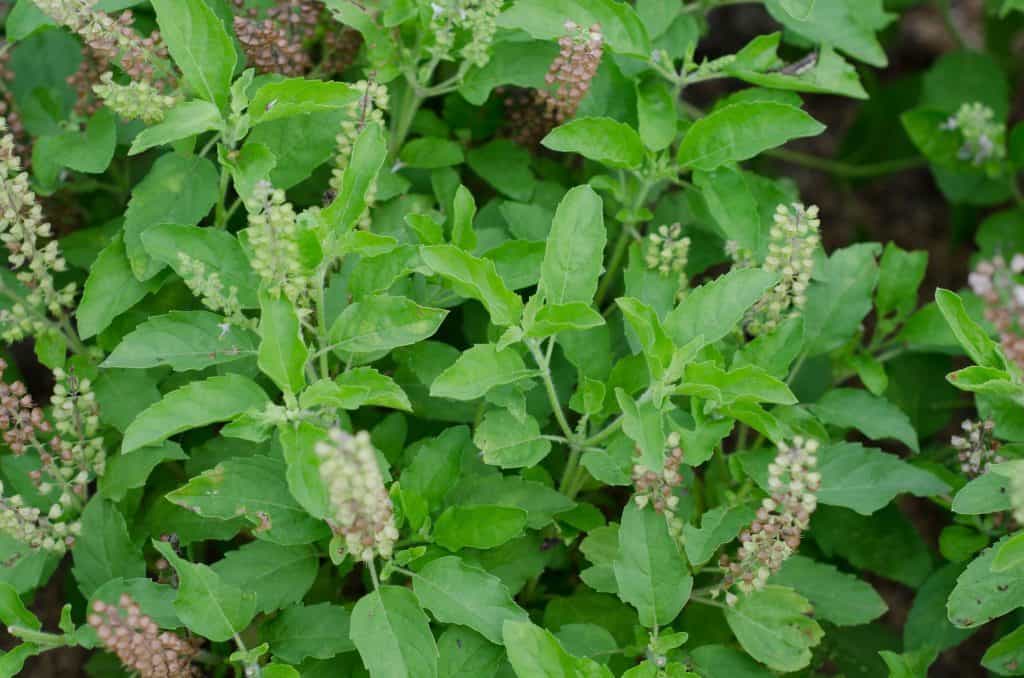
Krishna Tulsi
Krishna Tulsi has purplish leaves with strong aromatic smell. It is believed to have more medicinal properties than Rama Tulsi. That said, some people might find taste of Krishna tulsi quite too spicy and pungent. Growing both Rama and Krishna tulsi in your home is a good idea.

Amrita Tulsi
This tulsi is not discussed enough but it’s quite an unique perennial variety. The name Amrita means immortality. Maybe it’s called that because it’s very difficult to kill this plant as it can grow in toughest and variety of environment. In terms of look, it looks like a mix on Rama and Krishna Tulsi- the leaves are green but the stem is purplish.

Vana Tulsi:
Vana is a Hindi word that translates to Forest in English. Vana Tulsi is a perennial Basil. It actually falls under Ocimum gratissimum species, which is different from Rama and Krishna Tulsi. Vana Tulsi is also known as African tulsi
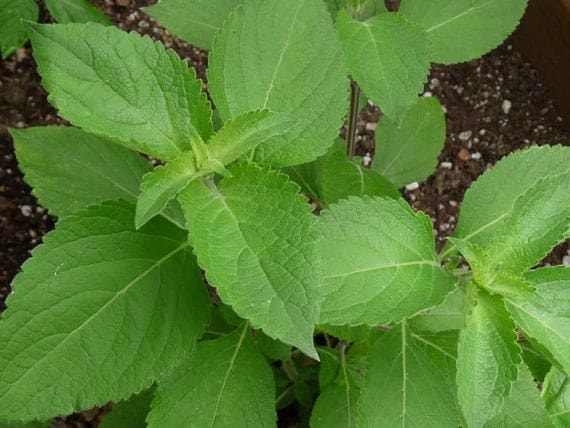
Other lesser know Variety of Tulsi includes Drudriha Tulsi, Tukushmiya Tulsi, Babi Tulsi, Kapoor Tulsi.
Benefits of Tulsi (Holy Basil)
Tulsi is worshipped in Hindu culture not just due to mythological reasons. Tulsi is also a potent herb that has many health benefits and cures many ailments. This easy to grow herb strengthens immunity, fights bad viruses and bacterias. In Ayurveda, Tulsi is given great importance and has been discussed extensively. Even modern science has admitted most of the benefits of Tulsi. Let’s list some of these benefits:
- Improves skin complexion when applied topically and also when consumed
- Beneficial to treat skin disorders like ringworm, pimples, and itching
- Beneficial to control high blood pressure and cholesterol
- Improves digestive system
- Help in mouth diseases, dental health, and ulcers
- It has antibiotic and anti-bacterial properties
- Help is lung issues like Asthma or chest congestion
- Rich source of Vitamin A and C
- Provides relief during fever, cold, headache, cough, sore throat
- Regulates high sugar levels in the blood
- Helpful for joint pain and arthritis
There are many other benefits that ways to use tulsi. In Ayurveda one component when mixed with some other can add a new benefit to it. So this alchemy is best left to the experts. A good starting should be to at least start adding tulsi to our morning tea. This inexpensive herb is truly magical. Also checkout these Top 10 Medicinal Plants in India
Now, Let’s talk about Other Basil Varieties
Sweet Basil
Sweet Basil is one of the most used Basil in culinary dished. Due to its spicy clove flavour, It’s used in most of the Italian sauces, pesto and soups as a key ingredient. The color of the leaves an range from green to purple and the plant can be 12-18 inch tall. Sweet basil grows well in sunny condition.
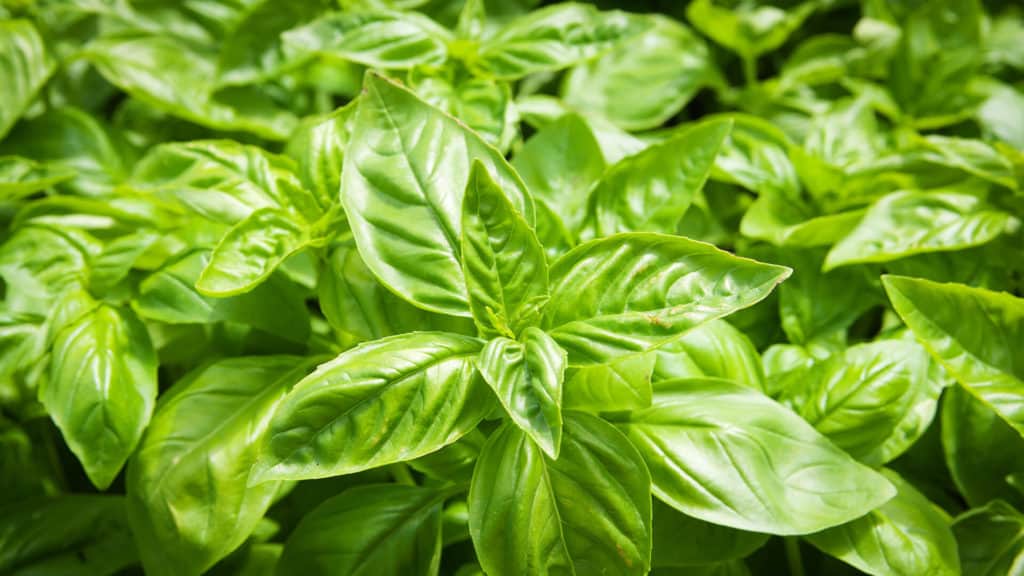
Lime/Lemon Basil
Lime and Lemon Basil, both have citrus flavor in its leaves. No wonder, they are used to garnish lemon iced tea and to add to salad. The dried leaves can be used as a room freshener or to make hot tea. This type of basil loves sun and grows well in both open garden or in pots.
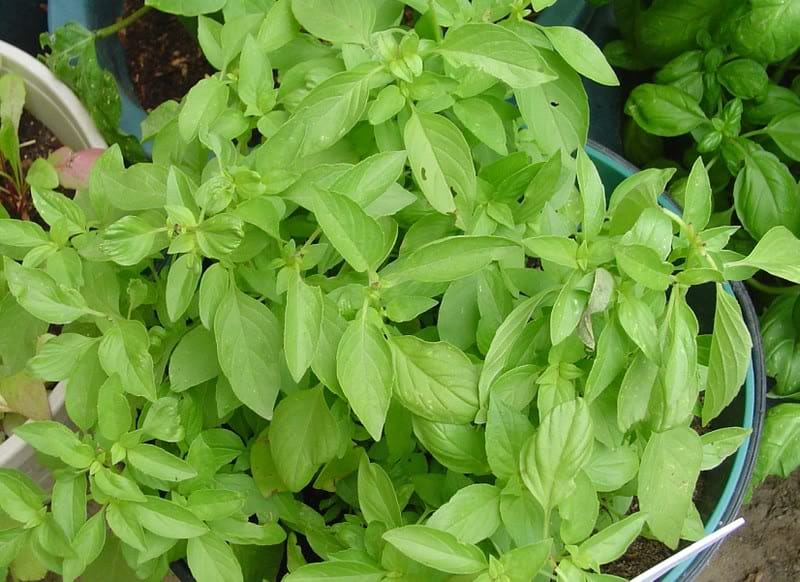
Greek Basil
Greek basil is also referred to as little leaf. That’s because it has small leaves and and the plant itself has a short height of under 8 inches. This is grown not only for culinary reasons but also for ornamental reasons. The taste of its tiny leaves is close to Sweet basil. Greek Basil is native to Southeast Asia.
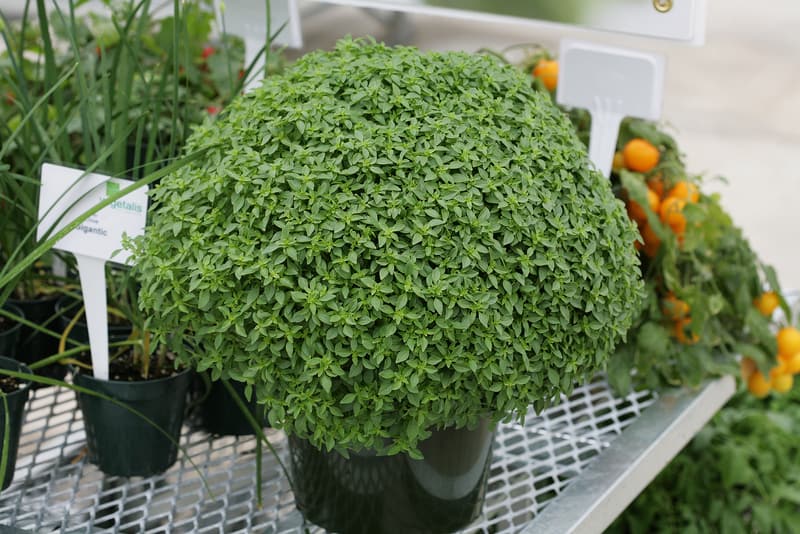
Thai Basil
Thai Basil, as the name suggests is mostly used in Thai and Vietnamese cuisines. It has an unique spicy flavour that reminds of anise or clove. Thai Basil comes under Mint family. It’s extensively used in dishes like Pho, Vietnamese noodle, soups, and broth. Thai Basil is a perennial herb and can grow upto 18 inches tall and has 1-2 inch long green leaves. The stem is mostly purplish.

Cinnamon Basil or Mexican Basil
Cinnamon Basil, aka the Mexican Basil is quite similar to the Sweet Basil in term of taste. Add Cinnamon flavour to it and you got a great flavour to add to your dishes. The leaves of Cinnamon basil is smaller in size compared to Sweet basil. It has purple stem with fragrant green leaves. Cinnamon Basil can be 12-18 inches tall.

Lettuce Leaf Basil
The Lettuce Basil is easy to identify due to its wrinkled leaves that resembles lettuce. And like lettuce it’s mainly used in salads. Mostly because, the flavour of Lettuce Basil is milder and less pungent compared to Sweet Basil. People also enjoy infusing oils with Lettuce Basil and use it as a dip for bread.

Christmas Basil
Christmas Basil is a hybrid created by cross breeding Genovese and Thai Basil. The taste of Christmas Basil is fruity, and it great for adding to drinks and salads. It’s also used as an ornamental plant due to its red-purple flowers.
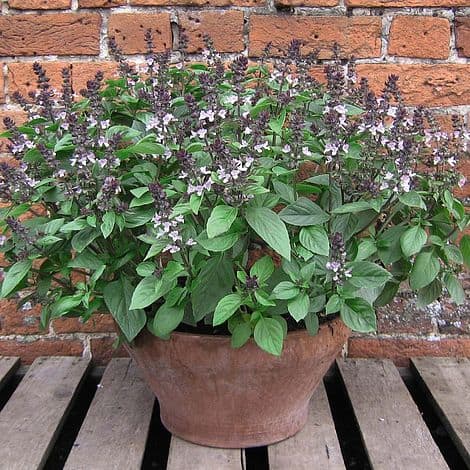
Napoletano Basil
Napoletano Basil is called that because it comes from Naples, Italy. Its light green leaves are large and crinkled. It’s milder than Sweet basil in terms of taste but can be spicier. The large leaves are great for wrapping fish, veggies, and cheese. This plant grows around 2 feet high.
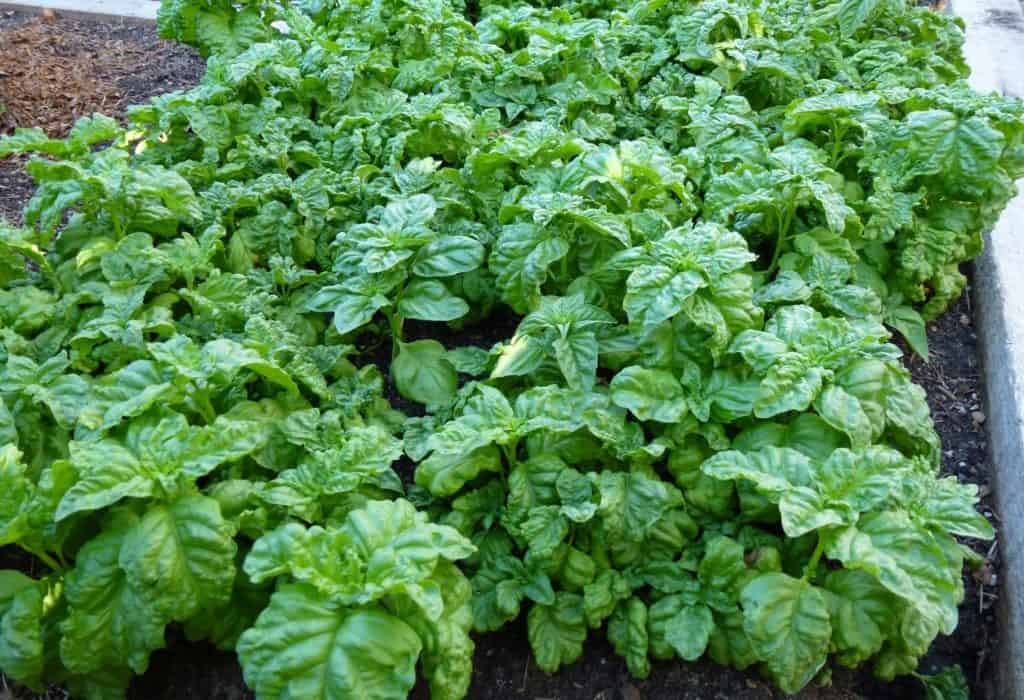
Genovese Basil
Genevese Basil is a variety of Sweet basil. It can be identified from its flat and pointy leaves. Its sweet and spicy flavour is great for Pesto, salads, sauces and dips. It can be grown in a container or out in the open.

Summerlong Basil
Summerlong Basil falls in the Dwarf plant category. Since it’s small in size, the Summerlong basil matures quite fast. It generally starts producing leaves within 30 to 60 days of sowing, in 60-90 days it fully matures. This small and bushy basil is a great option for any container gardener.
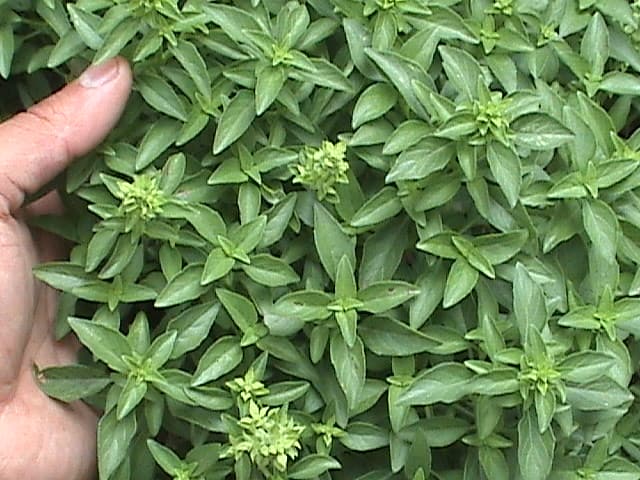
Cardinal Basil
Cardinal basil is easily distinguishable from other basils due to its big red flowers that bunch up at the top. It’s one of the top choice for any ornamental garden. If looks were not enough, it can be used in the kitchen like other basil varieties.

Ararat Basil
Ararat Basil has dark purple stem that extends little bit into leaves. The purple tinge in the leaf is surrounded by a green colour. This basil can grow upto 18 inches tall. The taste of Ararat Basil has the same anise aroma like Sweet basil but with extra hint of licorice. Ararat Basil is grown year-round but peak production happen during summer. Ararat Basil is a native of Isreal.

Grow Tulsi and Basil from Seed
How to Grow Tulsi from Stem Cutting
FAQ about Tulsi
What are the different types of Tulsi?
There are four different types of Tulsi: Rama Tulsi, Krishna Tulsi, Amrita Tulsi, and Vana Tulsi
Does Tulsi Give Oxygen at Night?
Yes, Tulsi is one of the rare plants that also give out oxygen at night.
Which Tulsi is most Beneficial for Health?
Every kind of Tulsi is very good ayuvedic medicine. However, Krishna Tulsi is believed to be most potent.

